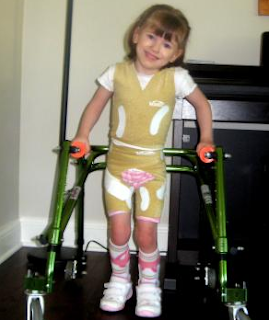Every year, up to 10,000 babies born in the United States experience brain damage that leads to a diagnosis of cerebral palsy. Injuries to the brain may occur in utero (when an infant's brain doesn't develop properly), during childbirth (if there is a difficult delivery, a premature delivery, or trauma), or during a child's early years (due to an infection such as bacterial meningitis or a head trauma). Half of cerebral palsy cases have no known cause.
Cerebral palsy affects each child's motor skills differently. Some children get around just fine unassisted; others move with the aid of a walker; still others may need the help of a wheelchair. You should expect your baby to reach certain milestones like rolling over, crawling, walking, and talking later than typical peers do -- if she reaches them at all. Your baby should be referred to early intervention services, such as physical, occupational, and speech-language therapies, as soon as possible following her diagnosis. States are required to provide these services for free to eligible infants and toddlers up to age 3 through the Individuals with Disabilities Education Act. Therapists can work with your child to improve muscle tone, movements, posture, swallowing, and speech. They can also provide you with physical therapy exercises that you can do at home with your baby and provide tips on how to manage certain tasks, such as feeding.
Many children with cerebral palsy learn just as well as their typical peers do and have average, or even above average, intelligence. But sometimes problems with movement or speech hinder learning. Therefore, many children with cerebral palsy may have lower-than-average intelligence or specific learning disabilities, or both, Dr. Hubrow says. "A child who is affected on one side of the body may have perceptual problems that make certain tasks -- like doing a puzzle or understanding a map -- more difficult." Therapies provided through early intervention services can help your child master these skills, teach him ways to work around them, or introduce him to helpful learning devices like communication boards or speech-language computer programs.
Baby Cerebral Palsy Pictures
You also like this article





No comments:
Post a Comment